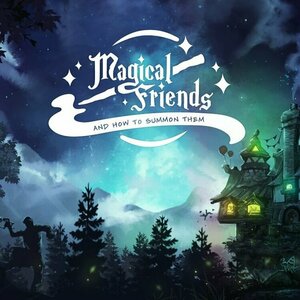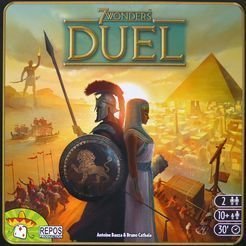
Pixel Cup Soccer 16
Games
App
Pixel Cup Soccer 16 is a casual retro style soccer game, a great evolution from the first edition....
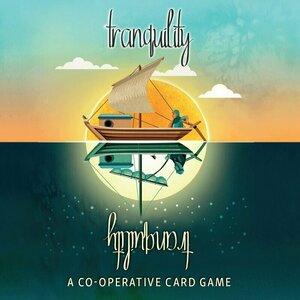
Tranquility
Tabletop Game
Jump on board the good ship Tranquility and set sail for paradise. Take care, though, because in a...

Forever Pucked (Pucked #4)
Book
Being engaged to Alex Waters, team captain and the highest paid NHL player in the league, is...
Purple Phoenix Games (2266 KP) rated Magical Friends and How to Summon Them in Tabletop Games
Sep 29, 2021
Disclaimer: We were provided with a prototype copy of this game for the purposes of this preview. The components pictured are not finalized, and could change after a successful Kickstarter campaign. I do not intend to rehash the entire rulebook, but rather provide a general overview of the rules and gameplay. For more information, head to the Magical Friends website. -L
Magical Friends and How to Summon Them (referred to as just Magical Friends from hereon out) is a strategic game of card drafting and variable turn order in which players take on the roles of mages attempting to summon the most magical creatures to the local tavern in order to win the Midsummer festival competition. Played over 8 rounds, players will take turns summoning creatures, moving them towards the tavern, using special creature abilities, and occasionally fighting off your opponents’ creatures. The player who gets the most creatures to the tavern by the end of the 8th round is the winner! To setup for the game, lay out the main board and summoning board in the center of the table. Take the 4 double-sided map tiles, randomly choose a side, and place them in their corresponding places on the main board. Shuffle the Summoning cards and reveal a number of cards, determined by player count, to create a market row and preview row. Each player receives a player mat, heart tokens, and Artifact Cards in their chosen color. Place the round marker on Round 1 of the main board, select a player to get the starting player token, and the game is ready to begin!
To start a round, first you will need to determine turn order. Each player has an identical deck of 11 Artifact Cards, numbered 1-11. The player who offers the most powerful (highest number) Artifact gets to act first in the round. The player with the starting player token chooses their card first, and places it face-up on their player mat. The next player, in clockwise order, will do the same. Here’s the catch though – once a number has been played, it cannot be played by anyone else for this round! So say I put choose my value 8 card – no other player may choose that card for this round. Once all players have chosen their Artifacts, determine the turn order for the round. The player with the highest valued Artifact goes first, then the next highest, and so on.
Once the turn order has been determined, it is time for players to take their turns! On your turn, the first thing you will do is to select a Summoning card from the Summoning board and take it into their tableau. The selected card tells you which friend (creature) you have summoned, and tells you how many moves/what types of movement you may take this round. After choosing your Summoning card, you will take any/all of the following actions: Summon a friend (bring its standee into play), use basic movement (as determined by your new friend), use bonus movement (from other cards), or use the abilities of any friends in your tableau. You may perform as many of these actions as you want and are able to perform. It is important to note that each friend may only use one basic movement and one bonus movement per round. So you can’t just move a single friend with every movement available in one turn.
Once you are finished performing actions, you will end your turn. Refresh the Summoning board by shifting cards down and refilling any empty creature slots. Play then moves to the player with the next highest valued Artifact card. When all players have taken their turn, the round ends. Move the Round marker up one spot, and pass the starting player token to the next clockwise player. A new round will then start with the turn order determination, beginning with the new starting player. After 8 rounds of play, the winner is crowned. Players score points for the number of their friends who reached the tavern, and the player with the highest score wins!
I’ll come right out and say that I really have enjoyed Magical Friends. There are lots of elements that I like and that work well together to create a fun, strategic, and engaging game. First, turn order determination. I love that the turn order isn’t set for the entire game, because that could really be a detriment to whomever would be last every round. Being able to ‘bid’ for turn order, in a sense, allows players to be proactive (or conversely, reactive) with their strategy. And after you’ve used an Artifact card in a round, it is discarded and cannot be used for the rest of the game. So you need to decide when it’s worth it to play your high value cards to hopefully act first, or if you’re willing to risk playing a mid-value card that might be out-bid by an opponent.
The other awesome strategic element are the friends in the game. Each friend is a different creature with different movement options and special abilities during gameplay. An important thing to note is that although every friend has a printed movement value on its card, you may only ever use that value on the round in which you summon that friend. So a Griffin, for example, lets you move 3 friends 2 spaces, which you may do when you first summon the Griffin. But in future rounds, the Griffin will only move based on the movements provided by the most newly acquired friend. Maybe you don’t necessarily want to summon a Mermaid, but the movement she offers is exactly what you need to get some friends to the tavern for scoring. It’s all a neat mix of strategy that you are changing with every turn. Along with the movements, each friend has a special ability that can be used on your turns. Some abilities allow you to move extra spaces, move opponents, or even slay creatures. When you slay a creature, you collect its heart token for endgame scoring, and the player who controlled that creature gets a Pity Power card (which provide bonus movement). You need to decide when to move which friends, and in what order to trigger your abilities. You must always be paying attention to the board layout and your opponents’ turns as they will help you determine your strategy for future turns.
Components. As I mentioned earlier, this is a prototype version of the game, but with that said, the components are pretty nice! The cards are sturdy, the text is clear, and the artwork is fun to look at. The main game board and summoning boards are colorful, and the creature standees are nicely sized for the board. I do have to say that I really like the heart tokens used to identify to whom each creature belongs on the board. The hearts slide over top of the standee and create a base of sorts to color-code every creature on the board. Just a neat little use of components that make the gameplay smooth. And how about the insert? It’s awesome! The standees are all stored, assembled, in a slotted inlay that allows for quick selection of creatures. I hope that’s something that makes it to final production because it really helps streamline the gameplay. Some of the wording in the rulebook could use some clarification, but I know that it is still a work in progress and continues to undergo edits. The only negative I would have to say is that 2 of the player colors are black and gray – and they are sometimes difficult to differentiate between. But changing one color should be an easy fix!
All in all, I was pleasantly surprised by Magical Friends. At first glance, I thought it would be a pretty simple ‘roll-and-move’ type game, but it proved to be much more strategic and engaging than I initially thought. The variable turn order, the movement rules/restrictions, and the unique friend abilities all work together to create a cohesive, thematic, and strategic game. I very much am looking forward to following the progress of Magical Friends and How to Summon Them on Kickstarter, and I encourage you to check it out as well!

Play Beach Soccer Match - A real football tournament on world popular beaches 2015
Games and Sports
App
Playing soccer on soft sand is always enjoyable, here comes the realistic beach soccer game with...
Purple Phoenix Games (2266 KP) rated 7 Wonders Duel in Tabletop Games
Oct 26, 2021
7 Wonders: Duel is a 2-player tableau and engine-building card game set in the 7 Wonders game universe where players collect cards to create an engine to gain VP using any number of winning strategies. The game takes place over three ages and the player with the most VP at the end of the game, becomes victorious via military supremacy, or wins via scientific supremacy.
To setup, place the game board between the players with the green Progress tokens, Military tokens, and red Conflict pawn upon it. Shuffle the Age I cards and lay them according to the rule book (this formation changes for each age. Age I is setup in the photo below). Each player receives seven gold and they draft their Wonders according to the process in the rules.
On a turn the active player will choose one uncovered face-up card to be used one of three different ways. The card can be added to the player’s tableau and “built” by spending resources required, if any. The card may be discarded in exchange for coins totaling 2 + the number of yellow cards built in the player’s city. Lastly, the card may be used to build a player’s Wonder card by inserting it below the Wonder and paying the cost, as in 7 Wonders proper. The next player will then take their turn.
If on a turn a player builds certain card types into their city, special actions are taken. This happens as a result of building Military or Science cards. When a player builds a Military (red shield icon) card they immediately move the Conflict token on the board one space toward their opponent’s Capital (the end of the board closest to the opponent). Should a player force the Conflict token to reach their opponent’s Capital, the attacking player immediately wins! The other special action that can be taken is with a pair of Science cards being built. For every pair of like-symbol Science cards built, the active player may choose to take one of the Progress tokens from the game board and add it to their collection. These tokens can be very powerful, and just as in 7 Wonders proper, Science is a viable yet difficult strategy. Should a player build any six unique Science icons on cards they will immediately win!
If a Military or Science supremacy victory is not achieved, the game continues to Age II, where setup of the cards is different, but play remains the same. Similarly, Age III is setup differently still and has the added bonus of three random Guild cards, which may add significant strategic icons or abilities. At the end of Age III the players count their VP from the various sources listed in the rule book and the ultimate champion is then crowned!
Components. This game comes in a very small box, so the components are also quite small. I believe myself to have medium-sized man-paws and I have not had any issues with size of components. They are all very high quality, as is to be expected from Repos Production, and are fantastically illustrated. The Conflict token is enticingly menacing, and it lures me into concentrating on a Military victory every time I play. I need to just ignore it, but it’s so beautiful! All in all, the components are great, and even though the cardstock is relatively thin, my copy has withstood many plays and has seen very little wear and tear.
So 7 Wonders: Duel exists for all those players who love 7 Wonders but do not wish to play it with the 2-player variant rules. While Duel is certainly a little sibling, it is also its own beast of a game and should be treated as such. There are several key changes in rules for Duel, such as the trading with the BANK for missing resources upon building versus paying a neighbor to borrow their resource production. Also, the obvious change of adding a board with an ever-dancing Conflict token is unique to this title. Wonders are treated differently and instead of receiving one Wonder with three layers, Duels gives each player four Wonders with just one layer.
Aside from the differences between the two games, I do believe that if you are a fan of one you will also like the other. I can see, though, gamers who dislike 7 Wonders enjoying the smaller 7 Wonders: Duel. There is just something about being able to focus on one other player and agonizing over every turn so that your opponent receives a useless card from the offer, or taking every Military or Science card possible so as to end the game as quickly as possible. My brother, Bryan, greatly dislikes 7 Wonders, but he does not mind playing Duel, or at least that is what he led me to believe…
Myself, though, I think I still prefer original 7 Wonders, and I believe it is because I can soar through a game of it in under 15 minutes while holding a conversation with the other players (as long as they have played before and are very comfortable with the rules). Duels creates a more intimate feeling and eats up more of my brainpower. Purple Phoenix Games has awarded 7 Wonders Duel the coveted Golden Feather Award, so we agree that this is a fabulous game. If you have been waffling over grabbing a copy of Duels, please do yourself a favor and just purchase it! I promise you will have a great time with it, and if you end up disagreeing with me, let me know. We can play whatever you like next time we meet.

Volleyball Strategy Tool
Sports and Utilities
App
Get it NOW for JUST $0.99!!! Volleyball Strategy Tool is a fully universal app, compatible with...
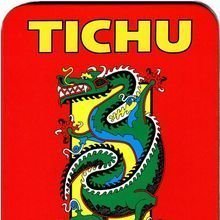
Tichu
Tabletop Game
Even though over 642 million Chinese play Tichu nearly every day, the game is very complicated for...
BoardGames CardGames TricktakingGames

Dunkest - Fantabasket NBA
Games and Sports
App
Dunkest.com is the best Fantasy Basketball based on the NBA championship. With Dunkest you can...
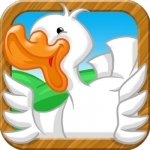
thegameofthegoose
Games and Entertainment
App
One of the most popular boardgames The Game Of The Goose (a race game) now on your iPhone and iPad!...
